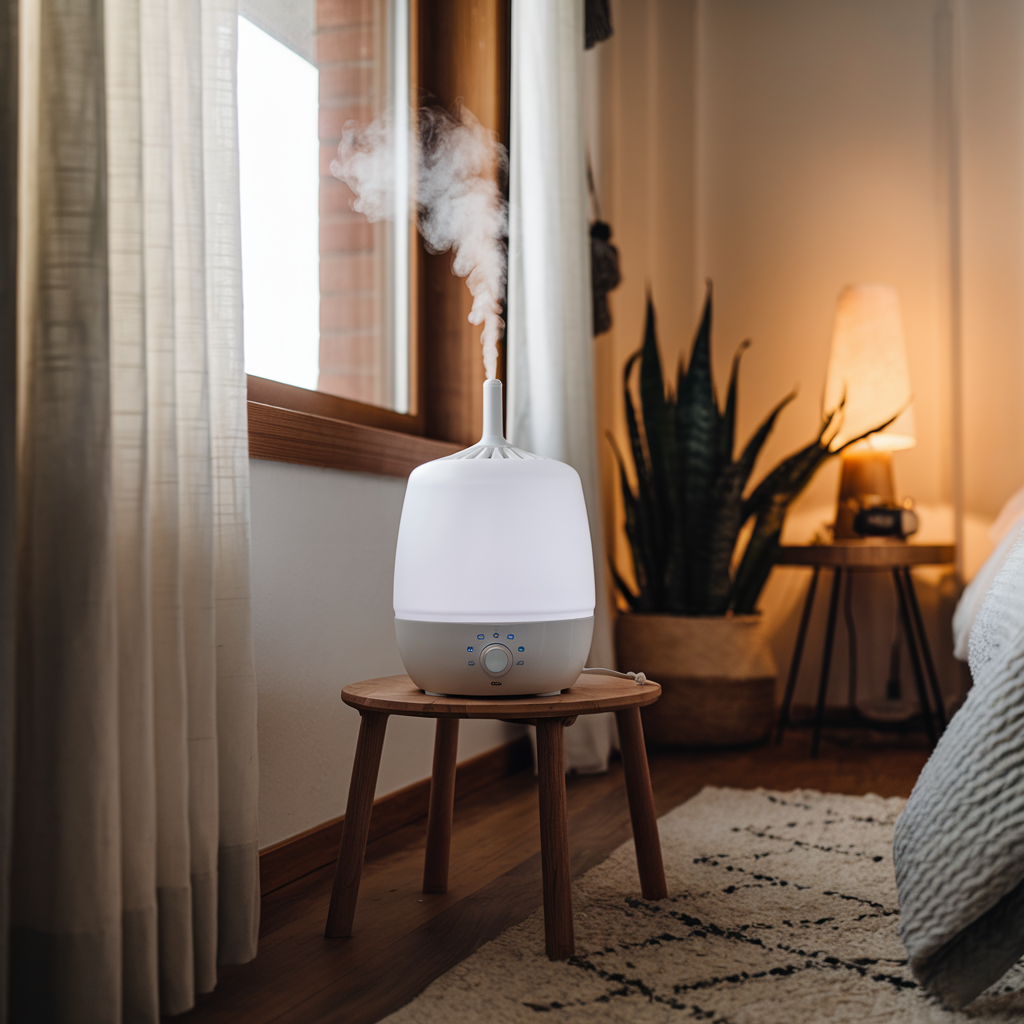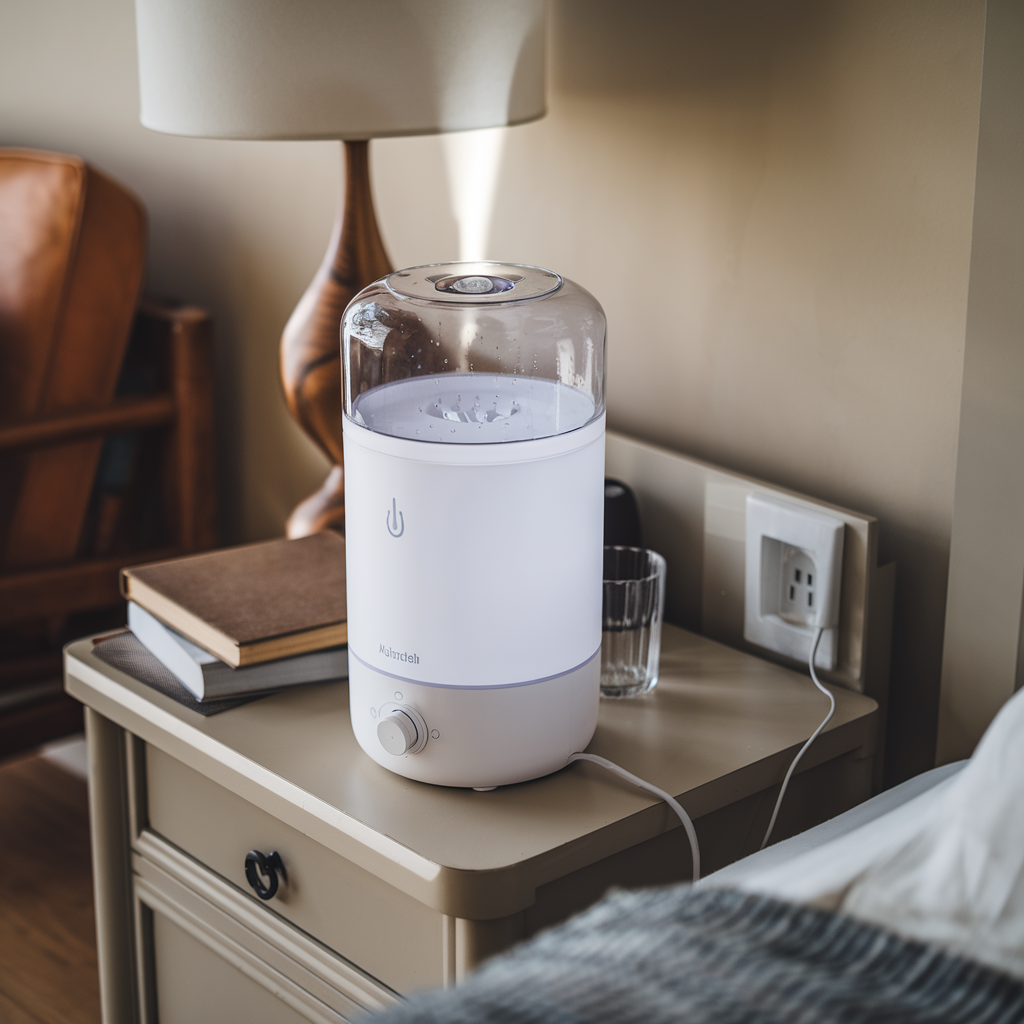Physical Address
304 North Cardinal St.
Dorchester Center, MA 02124
Physical Address
304 North Cardinal St.
Dorchester Center, MA 02124

Finding the right spot for a humidifier can make a world of difference in your home’s comfort level. As someone who’s navigated the challenges of dry air, I know how crucial it is to place this device where it works best. A humidifier not only alleviates dryness but also improves overall air quality, making your living space more inviting.
But where should you put it? The answer isn’t one-size-fit
Finding the right spot for a humidifier can make a world of difference in your home’s comfort level. As someone who’s navigated the challenges of dry air, I know how crucial it is to place this device where it works best. A humidifier not only alleviates dryness but also improves overall air quality, making your living space more inviting.
But where should you put it? The answer isn’t one-size-fits-all. Certain rooms can benefit more from added moisture than others. Whether it’s the bedroom for better sleep or the living room for family gatherings, understanding the best room for your humidifier can enhance your well-being and create a healthier environment. Let’s explore the ideal locations for your humidifier and how to maximize its benefits.

Humidifiers add moisture to the air, improving indoor conditions. They help alleviate dry skin, irritated sinuses, and respiratory problems, especially in winter when heating systems dry out the air.
Types of humidifiers include:
When choosing a humidifier, consider factors like room size, water capacity, and maintenance requirements. Using a hygrometer can help monitor humidity levels, aiming for a range of 30% to 50%. Proper placement of the humidifier enhances effectiveness, promoting a healthier living environment.
Using a humidifier offers several advantages that enhance overall comfort and well-being at home. Understanding these benefits helps me choose the right settings for my humidifier.
Improving air quality significantly impacts indoor environments. Humidifiers add moisture to the air, reducing dust, allergens, and irritants. They’re especially beneficial during dry winter months when indoor air can become excessively dry. A well-maintained humidity level, typically between 30% and 50%, can reduce the spread of viruses and bacteria, promoting a healthier atmosphere. Plus, by minimizing the dryness in the air, I can also lower my need for frequent dusting and vacuuming.
Health benefits associated with humidifier use include alleviating respiratory issues and skin problems. Maintaining optimal moisture levels helps ease symptoms of allergies and asthma by soothing irritated airways. Skin hydration improves significantly, reducing the chances of dry skin and chapped lips. Furthermore, humidifiers help mitigate nasal congestion and sinus irritation, especially during cold and flu seasons. When my home environment is comfortable, I notice better sleep quality and overall health, making humidifiers a valuable addition to my living space.
Placing a humidifier in the right room enhances its effectiveness and maximizes the benefits of increased humidity. The optimal rooms for humidifiers include the bedroom, living room, office, and bathroom.
In the bedroom, a humidifier tackles dry air while you sleep, promoting better breathing and improving skin hydration. Adding moisture helps alleviate nighttime nasal congestion, reducing the risk of sleep disturbances. A humidifier maintains humidity levels between 30% to 50%, ensuring a comfortable sleeping environment. For the best results, position the unit on a nightstand or shelf, keeping it several feet away from the bed.
In the living room, a humidifier creates a welcoming atmosphere for relaxation and social gatherings. It combats dust and allergens, contributing to a cleaner air quality. Keeping humidity at optimal levels supports plants and furniture, preventing damage from excessive dryness. Place the humidifier in a central location to evenly distribute moisture throughout the space, avoiding corners where airflow might be limited.
In the office, a humidifier boosts comfort during long hours of work. The added humidity eases dry throat and eye strain, common in air-conditioned environments. Maintaining a balanced humidity level supports concentration and productivity, reducing the likelihood of fatigue. Position your humidifier away from electronic devices and ensure it doesn’t obstruct airflow, allowing for optimal performance.
In the bathroom, a humidifier adds moisture to the air, benefiting skin and hair during personal care routines. It also helps prevent mold growth by maintaining a balanced humidity level. Utilize a small, portable humidifier in this space to create a soothing atmosphere while showering or bathing. Placing it on a stable surface, like a countertop or shelf, allows for even distribution of humidity, enhancing comfort during your routine.
Choosing the right room for a humidifier involves evaluating several key factors. Understanding these aspects helps in maximizing the benefits of using a humidifier effectively.
Room size plays a significant role in humidifier effectiveness. Small rooms, such as bedrooms or offices, require less powerful units, while larger areas, like living rooms, benefit from more robust models. Manufacturers typically provide coverage specifications, indicating the square footage a humidifier can handle. For example, a unit labeled for 500 square feet works well in a medium-sized room but may underperform in a larger space. Opting for the right-sized humidifier prevents over-saturation or insufficient moisture, ensuring optimal humidity levels throughout the room.
Monitoring humidity levels helps maintain a comfortable and healthy environment. Optimal indoor humidity should stay between 30% and 50%. Utilizing a hygrometer provides accurate readings of current levels. If humidity falls below 30%, a humidifier can alleviate issues related to dry air, such as respiratory discomfort and skin problems. Conversely, if levels exceed 50%, the risk of mold growth and dust mites increases. Adjusting settings and regularly checking humidity ensures the humidifier operates effectively, contributing to overall home health.
Finding the right room for your humidifier can significantly enhance your comfort and well-being. Each space in your home offers unique advantages that can improve air quality and health. Whether it’s the bedroom for better sleep or the living room for a more inviting atmosphere, choosing wisely makes a difference.
Don’t forget to monitor humidity levels to ensure you maintain that sweet spot between 30% and 50%. With the right humidifier in the right place, you’ll create a healthier living environment that supports your overall quality of life. So go ahead and make that investment in your home’s air quality; your body will thank you.